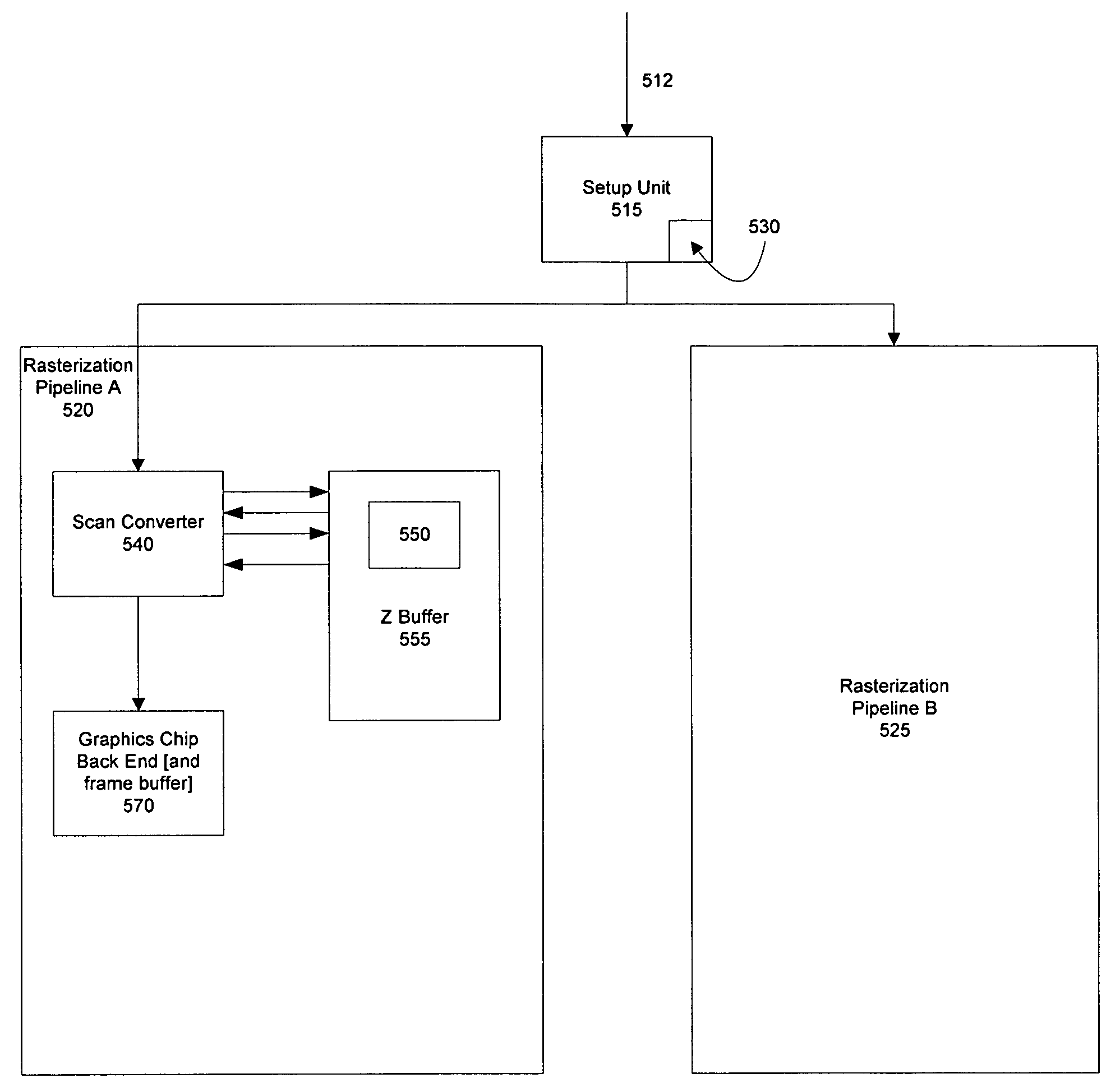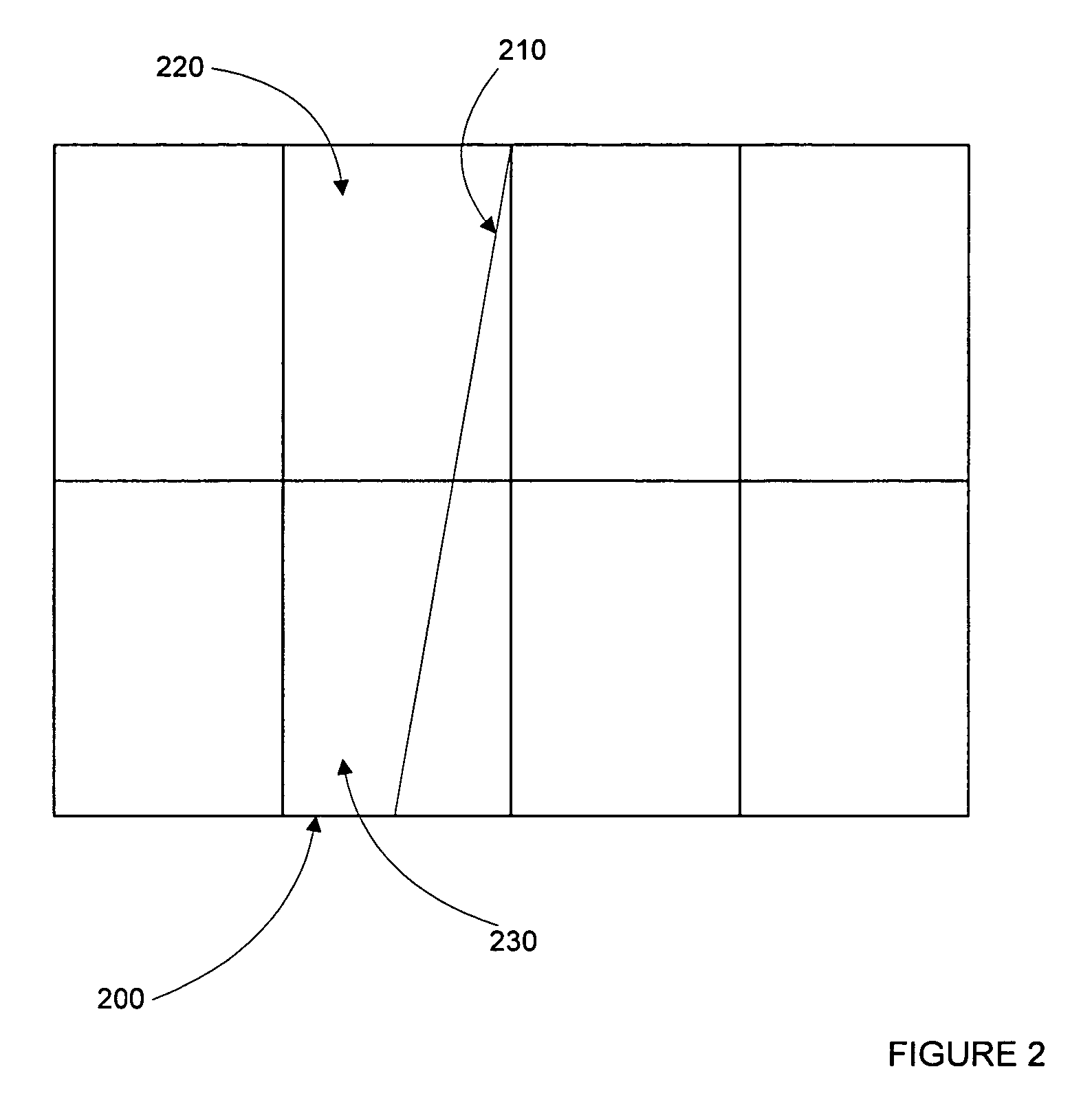Method and apparatus for rasterizer interpolation
a technology of interpolation and rasterizer, applied in the field of computer graphics, can solve the problems of reducing the likelihood that one raster will run out of work (or have no work), and achieve the effects of improving efficiency, reducing processing time, and finer level of precision
- Summary
- Abstract
- Description
- Claims
- Application Information
AI Technical Summary
Benefits of technology
Problems solved by technology
Method used
Image
Examples
Embodiment Construction
[0041]The invention relates to a rasterizer interpolator. In the following description, numerous specific details are set forth to provide a more thorough description of embodiments of the invention. It will be apparent, however, to one skilled in the art, that the invention may be practiced without these specific details. In other instances, well known features have not been described in detail so as not to obscure the invention.
[0042]Rasterizer Interpolation
[0043]In one embodiment, multiple parallel rasterizers are used. Each rasterizer is configured to perform its operation at the same time as the other rasterizers, each one executing one or more instructions in each clock cycle. An output screen is divided into a number of regions. For instance, in one embodiment, the screen is sub-divided into four regions and one of four rasterizers is granted ownership of each of the regions. In this way, tiles are interpolated to the appropriate pipelines.
[0044]Coarse grain tiling occurs by ...
PUM
 Login to View More
Login to View More Abstract
Description
Claims
Application Information
 Login to View More
Login to View More - R&D
- Intellectual Property
- Life Sciences
- Materials
- Tech Scout
- Unparalleled Data Quality
- Higher Quality Content
- 60% Fewer Hallucinations
Browse by: Latest US Patents, China's latest patents, Technical Efficacy Thesaurus, Application Domain, Technology Topic, Popular Technical Reports.
© 2025 PatSnap. All rights reserved.Legal|Privacy policy|Modern Slavery Act Transparency Statement|Sitemap|About US| Contact US: help@patsnap.com



